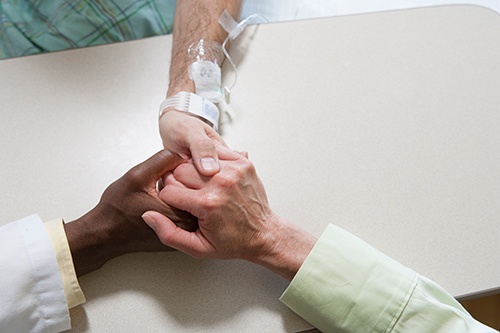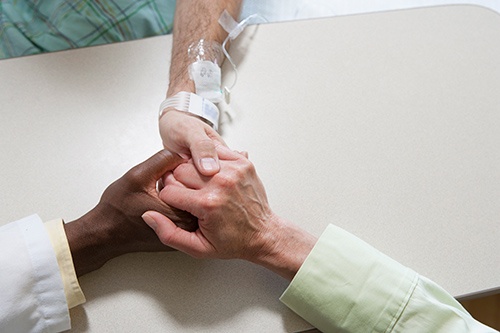 Palliative care, end-of-life care, and hospice care share a common goal: to relieve suffering. But there are also important distinctions.
Palliative care, end-of-life care, and hospice care share a common goal: to relieve suffering. But there are also important distinctions.
Both palliative care and hospice care provide comfort. But palliative care can begin at diagnosis, and at the same time as treatment. Hospice care begins after treatment of the disease is stopped and when it is clear that the person is not going to survive the illness.
Palliative services are typically provided by a team of interdisciplinary providers, including Physicians, Nurses, counselors, social workers, and chaplains. The team works together to assess and develop treatment plans with the patient and family that can provide the best possible quality of life.
According to the World Health Organization, palliative care:
- provides relief from pain and other distressing symptoms
- affirms life and regards dying as a normal process
- intends neither to hasten or postpone death
- integrates the psychological and spiritual aspects of patient care
- offers a support system to help patients live as actively as possible until death
- offers a support system to help the family cope during the patients illness and in their own bereavement
- uses a team approach to address the needs of patients and their families, including bereavement counselling, if indicated
- will enhance quality of life, and may also positively influence the course of illness
- is applicable early in the course of illness, in conjunction with other therapies that are intended to prolong life, such as chemotherapy or radiation therapy, and includes those investigations needed to better understand and manage distressing clinical complications.
Jean Farley, DNP, RN, PNP-BC, assistant professor at Georgetown University School of Nursing & Health Studies said, “Think of palliative care as a value-added layer to typical care for an individual experiencing a serious or life-limiting illness,” like cerebral palsy or amyotrophic lateral sclerosis (ALS), “especially when that illness carries a heavy symptom burden that will persist over time.”
Ellen Goodman, co-founder of the Conversation Project is raising awareness about the importance of having conversations about end of life care and wishes.
“Patients who have end-of-life discussions are much more likely to be satisfied with their care, die at their place of choosing, and have markedly less distressed relatives,” said Thomas Smith, MD, the Director of Palliative Medicine and Professor of Oncology at Johns Hopkins. “In fact, looking at people who use hospice, the survival of their spouse is higher. It is really fascinating.”
In the last 15 years, the field of palliative care has experienced stunning growth. Over 1,700 hospitals with more than 50 beds have a palliative care team today. And, palliative care is spreading beyond the hospital into community settings where people with serious illnesses actually live.
Any information or experiences you’d like add, please share it below. Thank you.







